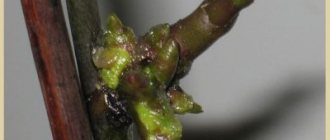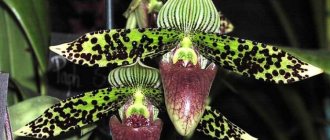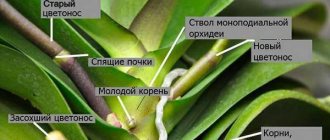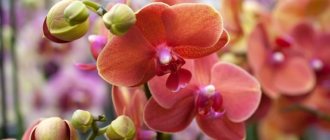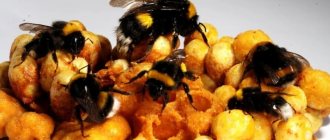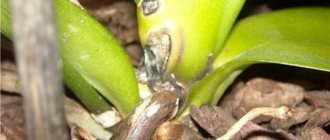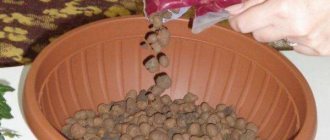Hormonal paste is an excellent assistant in cultivating orchids , since with its help gardeners grow new flower stalks and increase the number of children.
At the same time, you need to know how to use this drug, otherwise, instead of the desired peduncle, you can get many different growths or a baby, which then, after growing to the desired size, is planted in a separate container. Next, we will tell you what the orchid paste is called and how to use it.
Properties and release form
Many people use cytokinin paste to stimulate flowering. This is a hormonal drug. It is based on a component called the phytohormone cytokinin. It is necessary to stimulate the division of cells that reproduce their own kind. In appearance, the drug resembles thick honey. It is often used to awaken dormant buds not only on orchids, but also on other plants. When preparing and working with pasta, it is worth remembering that this is a dangerous substance. For storage, use a securely sealed container and place it in a cool, dark place.
The main property of the drug is its effect on the cells that are inside the plant. The paste can be used to propagate orchids, a very capricious flower. There are factors that can slow down or negate the effect of this drug - low temperature and drought. It should be taken into account that if the temperature is very high, you may need to apply the paste again after 10 days.
Important! To eliminate negative aspects, certain rules must be followed. One of them is that the paste needs to be heated for 2 hours at room temperature.
The orchid should also be kept in warm conditions. The treated area must be moistened. The gel is not washed out with water. When treating a plant with paste, do not allow it to get on other parts. During the procedure, humidity around the orchid must be maintained, which can be achieved using a humidifier or placing the flower on a tray with gravel and pouring water into it.
The product for flowering plants is packaged in small, hermetically sealed plastic containers. Cytokine paste for orchids should not be used after the expiration date.
Cytokinin ointment for growing violets
Violet is one of the most capricious plants grown by indoor flower lovers. To propagate the most complex varieties, cytokinin paste is used. Since many of them have difficulty giving birth to children, this drug has a good effect on this process.
Small scratches are made on the petioles located close to the ground and coated with cytokinin paste using a thin needle. The results should appear in about fourteen days. Don’t be alarmed when a lot of new shoots form. As they grow, they should be gradually planted in new pots, where violets will be grown in the future.
There are other ways to propagate violets. The next method involves cutting off the top of the plant so that a few rows of leaves remain in the flower pot. The top part is rooted in the traditional way, and the cut of the base is lubricated with hormonal paste. To do this, a small amount of the substance is distributed over the surface in a thin layer. After a certain time, stepsons will appear on the base. You shouldn’t cut them at a young age: you should wait until they grow up and reach a width of four centimeters.
It also happens that on Saintpaulia the color of one peduncle differs from the rest. To obtain an original violet, you need to grow a new plant from a mutated peduncle:
- Use the tip of a needle to pick up a small amount of paste.
- Treat the axil of the peduncle. You need to lightly scratch the skin in the place where the stipule grows from the flower.
- Monitor the formation of a new growth point. Most often this takes several weeks. The violet is fed with a weak solution of nitrogen fertilizer after treatment with the paste.
- Cut off the “babies” as soon as they reach four centimeters in volume. They are rooted in the traditional way.
Advantages and disadvantages
A positive quality of the drug is the activation of growth buds, which remain in the embryonic state for a long time. It also forms and causes new stems and children to grow. The advantage is the ability to prolong the flowering of orchids and make it lush. It is noted that the growth agent begins to act quickly, the result can be seen 14 days after treatment.
The downside is the complexity of the procedure and the inability to know the exact dosage. Before using cytokinin paste on orchids for the first time, you should carefully read the instructions.
Since the drug, acting on the flower, awakens its side shoots to life, it can turn into a rather large bush, in which there will be a mother plant and from 2 to 4 basal children. If everything is left in one pot, then when the orchid blooms, it will be a luxurious bouquet. In some cases, paste is the last chance to save a dying plant. It helps a flower whose roots are dried or, conversely, flooded.
Negative factors that slow down or cancel the effect
Hormonal paste is not an absolute way to save a flower . Cytokinin paste should be stored in the refrigerator in a closed compartment and in a dark place, otherwise its positive qualities will disappear.
also used only on healthy bushes that are capable of growing an additional flower shoot or baby. More than 3 buds on one bush cannot be awakened at the same time, as this will deplete the main bush.
Cytokinin paste is used only on healthy plants.
Step-by-step instructions for use
There is only one instruction for propagating orchids with cytokinin paste and awakening them. The main thing is the presence of healthy, undeformed peduncles with waiting buds. The awakening procedure is recommended to be carried out at the end of winter and during the first two spring months. To do this, take a sharp, disinfected needle and carefully scratch the surface of the living kidney; if necessary, remove the dry scales protecting it. Care is necessary to avoid damaging it.
A very small amount of paste is applied to the opened area - the size of a pea. It needs to be smeared evenly over the kidney, it is better to do this with a toothpick. Awakening will begin in 7-10 days. While waiting for the result, you need to check your kidneys. They shouldn't dry out. To prevent this from happening, you should spray with lukewarm water. If suddenly one bud produces more than two shoots, the excess ones must be removed with a sharp, disinfected knife. To process cut areas, you can use:
- cinnamon;
- brilliant green;
- crushed coal.
The appearance of a new baby or peduncle may occur after 10 days or 2 weeks. The peduncle differs from the peduncle in having a more rounded tip.
Important!
To obtain a flower arrow, the amount of paste should not exceed 2 mm. When applying the drug in a larger volume, the result is not a peduncle, but a growing baby.
In order for the orchid to begin to actively form lateral shoots, a scratch is made at the junction of the leaves and roots, namely, slightly above and to the side of the lower leaves. Orchids treated with propagation paste should be placed in a bright and warm place, try to provide high humidity and minimize temperature changes.
Kidney activation
You can treat your kidneys with ointment at the end of February, but the best time is considered to be March and April. Awakening a sleeping flower is not difficult; even a beginner can do it. All necessary tools are prepared for work:
- blade;
- sewing needle;
- tweezers;
- ear stick;
- toothpick;
- gloves.
Until processing, the ointment is stored in a cool place, for example, in the refrigerator. Otherwise, in a warm and bright room, its beneficial properties will disappear. 3 hours before use, remove it from the refrigerator and keep it at room temperature. If you use the ointment cold, the plant may become stressed. How to awaken a sleeping kidney, step by step steps:
- A bud is selected from a healthy, faded peduncle, which is moistened with boiled water. To do this, use a cotton swab. The most suitable buds are located at the top or bottom of the peduncle.
- The scales that cover the kidney are folded back with a needle and then torn off with tweezers. A light green bump will appear. If the scales are not removed but left in place, applying the paste will be more difficult. All sharp instruments are pre-disinfected with ethyl alcohol.
- In order for the orchid paste to penetrate deep into the kidney tissue, it is necessary to make a small incision. To do this, the tubercle is carefully scratched with a needle.
- A small amount of paste is applied in a thin, even layer to the kidney. It is better to smear it with a toothpick. When propagating orchids, place a ball of paste weighing 2.5 mm, and to form a peduncle, a ball of 1.5 mm is enough.
- If you apply a small amount of paste and reduce the air temperature at night by 3 °C, you can achieve lush flowering. When propagating a flower, everything is done the other way around: a large amount of paste is added and the temperature is raised. Thanks to such conditions, children should be formed.
- Regularly spraying the buds with warm water will prevent them from drying out.
- Sometimes 2-3 shoots are formed from one bud. This happens when you put too much paste on it. The weakest shoots are cut off with a sharp knife, leaving the strongest. Otherwise they will interfere with each other and develop. The cut areas are treated with crushed activated carbon.
- You can determine by the bud whether a rosette or peduncle has formed after 21 days. If the end is blunt, then the arrow is growing. In children, the apex is pointed.
- You can stimulate the growth of a peduncle not only by lubricating the buds on a healthy shoot, but also on the trunk. To do this, make a scratch in the axil of the leaf, then apply a 1.5 cm layer of paste there. To prevent damage to the orchid, the paste should not get on the root or leaf blades of the plant.
If necessary, re-treatment is carried out after 7 days. Although most flower growers believe that the treatment procedure should be a one-time process. This will allow new shoots to actively develop, while receiving enough nutrition without sharing it among everyone.
Note! Sympodial orchids do not have dormant buds on their shoots and pseudobulbs, so treating them with cytokinin paste is useless.
Getting a new kidney
To obtain a new bud, you need to select a site on the stem. Small scratches are made on its surface. The best place is above the sheet. The work is performed with a disinfected needle:
- Use the tip of a knife to grab the ointment and spread it in a thin layer on top of the scratches;
- All treated areas should be moistened with a cotton swab if the air in the room is dry.
The first bud should form in 4 months. If it does not appear, you can try to treat the area near the old bud. After some time, a new flower should appear on the side.
Rooting of children and regulation of metabolism
Using cytokinin paste, experienced gardeners stimulate the formation of the root system in mature children. In this case, you need to apply a little product to the places where root primordia are observed and distribute it evenly. To maintain humidity at the desired level, it is recommended to wrap moss on top.
The drug affects material metabolism through the production of amino acids. As a result, the orchid blooms profusely with bright colors. The paste helps save a plant that has been improperly cared for. For example, you can heal a broken top. To do this, you should treat the plant below with the drug; in this place, you can later expect the appearance of lateral shoots and children.
Action
Cytokinin paste promotes accelerated cell division and controls metabolism, since the synthesis of amino acids is stimulated when taken. One application can give the following result: a flower bud or a “dormant” growth will wake up. This will cause the orchid to grow quickly. After which it will bloom profusely, and will bloom longer than usual. Thanks to cytokinin paste, the existence of dying and aging shoots is prolonged. The florist will be able to grow shoots in the required places and give the flower the desired shape. The paste is also often used to resuscitate an orchid that has “withered away” from mistakes made earlier during the care process.
Delay of aging processes and activation of flowering
Hormonal ointment for orchids can be used to slow down aging and decay - it renews its tissues and cells. On plants treated with it, the number of buds is much greater. The procedure is practically no different from that which is performed to achieve other tasks. But in this situation, it is recommended to treat the buds located closer to the top of the peduncle, while using pastes less than 0.5-1 mm.
Important!
Even if all conditions are met, a 100% positive result is not guaranteed. Everything depends directly on the plant itself.
Using the paste on the kidneys
By using the paste on a plant, you can be sure that the end result will be a peduncle or a baby . It all depends on the amount of paste applied.
Required Tools
In order to use hormonal paste, you need to have a number of tools with you:
- gypsy needle;
- sharp knife or scalpel;
- tweezers;
- alcohol or other solution for disinfecting instruments;
- cytokinin paste that has not expired;
- healthy mother orchid bush with faded peduncles.
Procedure
It is necessary to adhere to certain rules in order to stimulate the waiting kidney:
- on a strong living peduncle we select either the topmost bud or the bottom one;
- Use a knife to remove the part covering the bud and make light scratches with a gypsy needle;
- Using a needle, take the required amount of paste and apply it to the damaged kidney, evenly distributing the paste over the entire surface of the waiting kidney.
Application of paste on a dormant kidney.
IMPORTANT! All these operations must be done carefully so as not to further injure the plant.
How to apply the paste and create conditions to stimulate flowering?
The paste should be applied with a thick needle or toothpick. The main condition here is that the selected instrument must be completely sterile without harmful bacteria. Correct application will guarantee the appearance of a healthy peduncle.
When the flower arrow reaches approximately half its length, you need to start fertilizing the bush with specialized fertilizer “For Orchids”, since it contains a lot of phosphorus and potassium, necessary for the formation of buds.
What needs to be done for a baby to appear on a dormant bud?
In order for a young rosette to appear on a dormant bud, a pea-sized amount of paste with a diameter of about 3 mm must be applied . After which the flower is placed in a place where:
- warm;
- damp;
- a lot of diffused light.
In this case, the flower is intensively fed with nitrogen-containing fertilizers.
How long does it take to expect the kidney to awaken?
If all the above conditions are met, after two weeks a peduncle or baby will begin to form from the waiting bud . If the orchid continues to be in the hibernation stage, you can treat it with the paste again and check whether all the recommendations for caring for the bush have been followed or whether there were errors that need to be corrected.
Result of impact: baby or peduncle?
After three weeks, you can determine from the formed bud whether it will be a peduncle or a baby. If the bud is pointed and resembles a cone, it is a growing baby, since the peduncle grows with a blunt end.
A baby on a phalaenopsis peduncle.
Plant care after treatment
Phalaenopsis treated with cytokinin ointment needs proper care and increased nutrition. He needs to organize the proper conditions. The plant should be placed in a bright and warm place and fed. If you keep it in a cool room, then due to the fact that new shoots and shoots will develop quickly, the condition and appearance of the flower will deteriorate significantly.
For feeding, fertilizer is used, which contains more nitrogen than usual. Watering the orchid as it was before treatment should not be skipped; spraying with warm water should also be continued.
Care instructions
The flower must be provided with sufficient lighting
Within 2 weeks after treatment, it is necessary to check the condition of the kidneys, prevent them from drying out, and if necessary, spray with lukewarm water.
The orchid needs feeding with a complex that includes nitrogen. You can buy pharmaceutical succinic acid: grind 2 tablets, pour boiling water, stir until dissolved. Dilute the concentrate with a liter of water. Twice a month, water or spray with a warm product.
The flower should not suffer from a lack of lighting. Cytokinin paste will awaken the kidneys, but in conditions of insufficient light they will be weak. The soil in the pot should not be overheated or overcooled.
Making your own cytokinin paste
You can prepare the drug yourself at home. For this you will need:
- cytokinin;
- lanolin;
- 96% medical alcohol.
Pour 20 ml of alcohol into a dark glass container to make it easier to stir, you can put beads there. Heat the lanolin in a glass container in a water bath and bring it to a liquefied state. Add 1 g of cytokinin to alcohol, shake gently and pour into lanolin. Mix the mixture carefully and leave it in the container; the lid does not need to be tightly closed, the alcohol should evaporate. In 2-3 days the pasta will be ready. It should be stored in a dark glass container for no more than 5 years.
What can be replaced?
Often on forums you can find a question about what can replace cytokinin paste. It can be successfully replaced with hormonal paste made at home. only three components with you . Therefore, if you cannot buy it in a store or order it by mail, you can make it yourself.
You can make your own hormonal paste.
Precautionary measures
Working with paste requires that only mature, healthy and strong plants be processed. All instruments to be used must be disinfected. It is recommended to remove the cytokinin paste from the refrigerator 2 hours before the procedure so that it becomes softer. Do the work wearing thick gloves, and don’t forget to wash your hands with soap afterwards. Protect your eyes and open areas from getting the product into them.
Important!
Do not allow the paste to get on the surface of the leaves, nor should you smear the roots with it. This can lead to the death of the flower. Do not store the product near heating appliances.
Conditions for using the paste
There are certain conditions under which you should not apply the paste to an orchid bush:
- if the bush is damaged by disease or pests;
- if the orchid bush is not yet mature enough and does not have the strength to grow a peduncle;
- you cannot awaken more than three waiting buds on a peduncle;
- you cannot grow a baby and a peduncle on the same bush at the same time;
- if more than one shoot grows from one bud, the rest must be removed;
- Do not apply hormonal paste to the roots and leaf blades of the plant - this can lead to its death;
- if the bush is mature, but has a small number of roots, then first grow the roots, and only then begin to grow the flower shoot.
The paste is unable to revive a flower from a dying bush . It only helps a healthy bush to have offspring. That is, either produce a peduncle with flowers, which can subsequently produce seeds. Or a baby appears immediately, which is raised to a certain size and only then placed in a separate container.
If there is no peduncle or dormant bud
Without a peduncle or a waiting bud, growth is impossible, since the plant can only continue its life from a dormant bud . You cannot apply hormonal paste to the roots and leaf blades of an orchid, as this will lead to the death of the plant.
On a trunk without a peduncle
If you apply hormonal paste to the trunk, then there are waiting buds there that will produce a peduncle or basal child. We must remember that peduncles grow from the leaf axil, and a baby can grow on the side of the trunk .
Formation of a peduncle on the trunk of a dendrobium.
In the place where there was previously a dormant bud
In a place where there was already one growing bud that produced a peduncle, a second one will not appear even with the use of paste. Since she has already grown up and given flowers. Therefore, the buds located on the peduncle are lubricated; they will be able to continue.
On the bulbs
There is still little information about this, but no one is stopping you from trying . Therefore, we make scratches at the bottom of the bulb and wait some time for a growing bud to form, from which a new bulb will begin to form. Whether there will be a result - time will tell.
Analogs
You may be interested in: How to care for orchids in a pot after purchase Why the leaves of an orchid wither and how to save it Features of the care and propagation of the Dendrobium Nobile orchid
You can replace cytokinin paste for orchids with similar preparations, such as those made in Sweden. This green ointment is sold in 15 ml bottles. In addition to cytokinin, it contains B vitamins.
One of the powder analogues is Cytodef. Before use, the powder must be dissolved in water in the proportion indicated in the instructions. Thanks to the product, the stems become thick, the flowers large, and the leaves fresh. Cytodef contains potassium salts and supercytokinin. The drug is a mineral stimulant.
Another powder analogue is Letto, which is also diluted with water and sprinkled on the plant. As a result, the condition of the orchid noticeably improves. The flower stalks become larger and the shoots become sharper.
Safety precautions
Before you start using this substance, you must take some precautions:
- The paste should be at room temperature before use. To do this, it must be placed in a warm place for 2–3 hours, but away from open fire.
- It is advisable to use rubber gloves when processing the plant. Do not allow the paste to come into contact with your skin or eyes.
- The use of the substance on sick or damaged plants is strictly prohibited.
- Do not allow the paste to come into contact with the roots or leaves of the orchid.
It is not recommended to use this drug after its expiration date.
Contraindications
Cytokinin paste has some restrictions on its use. It is not recommended to use this hormonal remedy on sick orchids damaged by pests. The procedure will not give results, damaged stems will not recover, the plant will simply die faster.
There is no need to simultaneously stimulate the formation of a large number of peduncles or shoots. The product should be applied to one plant in at most 3 places. Such flowers should have a well-developed root system. They need to be provided with a comfortable microclimate and proper care.
Important!
You cannot use the drug on recently transplanted orchids because their root system has not yet formed. Weak roots will not be able to provide new shoots and peduncles with the necessary nutrition. If the procedure is completed, the young plant will begin to shed its leaves.
Time and reasons for use
Novice gardeners, when they first heard about the “magical” power of cytokinin paste, mistakenly assume that this remedy is a panacea that can bring an almost completely dead plant back to life. Cytokinin-based products, according to experts in the field of indoor floriculture, are more effective in comparison with other biostimulants, but they cannot always help.
Thus, the paste is recommended for treating orchid buds, which for some reason refuse to leave the dormant stage and wake up. An aesthetically unattractive orchid, in which leaves and “pseudobulbs” grow on one side, can be tried to be straightened using cytokinin. Cytokinin paste is also used to restore indoor plants damaged as a result of improper care. However, before using the drug, you must carefully examine the flower. If the situation is too advanced, the use of this drug is contraindicated. The orchid will spend its last vital energy not on restoration, but on the formation of new buds.
Purchase and cost
Cytokinin paste is most often sold in stores that sell all kinds of products for caring for indoor plants. They sell it in an online store with courier delivery. It is inexpensive - one tube costs approximately 150 rubles. For example, in St. Petersburg it is possible to buy it even cheaper - for 100 rubles. One tube can be used for quite a long time. You should not use a drug that has expired, otherwise you can expect the opposite effect.
If you cannot buy cytokinin paste, you can use similar products. However, we must keep in mind that their price is higher and their efficiency is lower.
When not to use
Despite their high efficiency, the use of hormonal drugs based on cytokinin composition is not always advisable. There are situations when, instead of active growth, there is a rapid deterioration in the condition of an indoor orchid.
So, the use of cytokinin paste is contraindicated in the following cases:
- extensive damage to the root system as a result of improper care, rotting or mechanical trauma;
- resuscitation of an orchid that has suffered from improperly created human-made growing conditions and care that does not meet standards;
- the presence of traces of harmful insects on the indoor flower;
- a plant weakened as a result of a fungal, viral or bacterial infection;
- young and fragile indoor plants.
